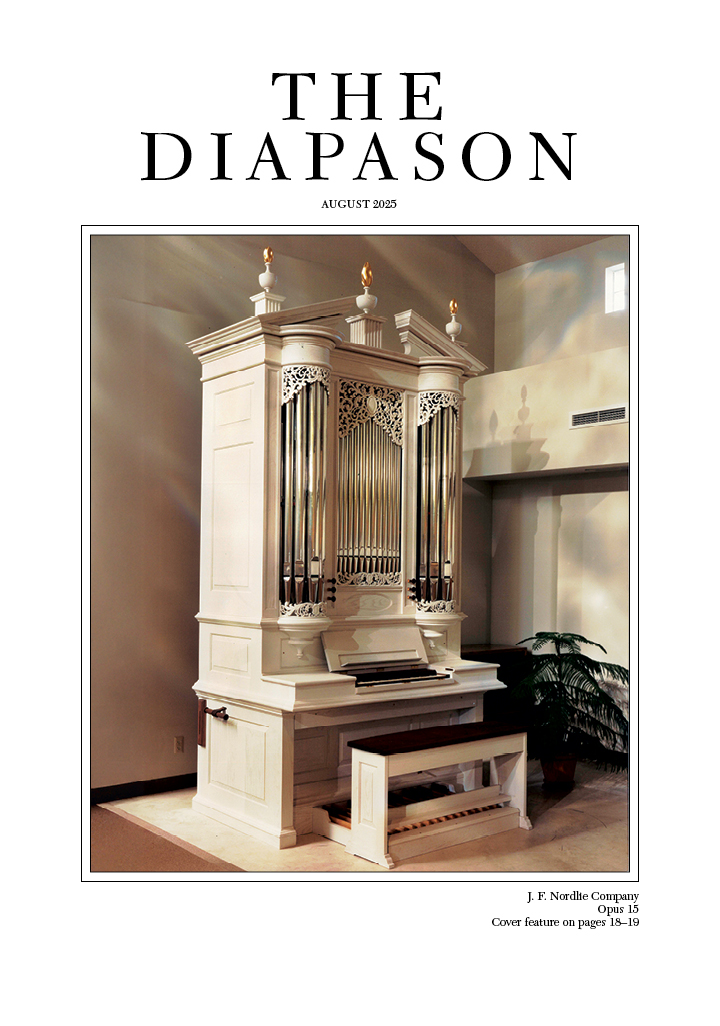A Kentucky Organ Tour: Nine Historic and Modern Pipe Organs of the Bluegrass. Schuyler Robinson, organist. Raven OAR-960; www.ravencd.com.
Recordings already exist made on several different organs in a city or area, many of them courtesy of the estimable Organ Historical Society, as I have mentioned occasionally. This example is unique in that the same artist performs on the various organs. The well-thought-out booklet gives information about each of the eighteen tracks, with a stoplist and photo of the instrument used. They range from a 1949 Holtkamp to a 2007 Buzard rebuild of an 1897 and 1936
W. W. Kimball. Others were built by Rieger, Reuter, Flentrop, Möller, Jaeckel, and Taylor & Boody.
Dr. Robinson, who has taught at the University of Kentucky since 1982, selects in each instance repertoire suited to the instrument, whether a small tracker or the large Reuter and Möller organs. He begins with Ronald Arnatt’s exuberant Fanfare, proceeding through Buxtehude, Bach, Boyce, Walther, Schumann, Brahms, Guilmant, Alain, Persichetti, Locklair, and Albright, even including George Shearing’s Chorale Prelude on “Amazing Grace” played on a Holtkamp, and it comes off very well.
Each listener may have a favorite sound among these various organs, but don’t miss Schumann’s Fugues 1 & 5 from Six Fugues on B-A-C-H played on the Buzard rebuild of the early Kimball. A Trumpet Voluntary of William Boyce is lovely as played on a 2005 Jaeckel organ in the Church of the Advent in Cynthiana. The final track is the finale from Guilmant’s Sonata No. 2, played on Robinson’s home turf, the Singletary Center for the Arts at the University of Kentucky in Lexington. It is a Möller of 90 ranks on five manuals.
This recording project, accomplished by Dr. Robinson during a sabbatical in the spring of 2007, was made possible by a Research Grant Award from the university. It is an imaginative concept, and most successful.--Charles Huddleston Heaton
Diapason review: A Kentucky Organ Tour: Nine Historic and Modern Pipe Organs of the Bluegrass
THE DIAPASON



